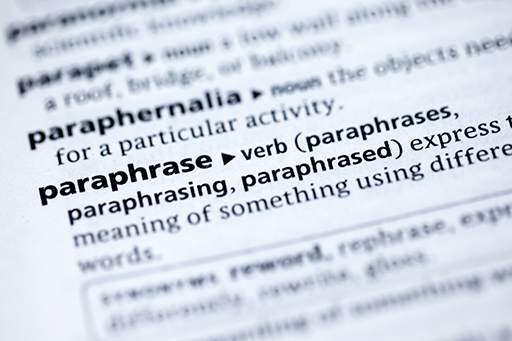1 What is paraphrasing?
Put simply, paraphrasing is where you express the meaning of someone else’s work, using your own words. It is also likely that you will make changes in the order or structure of the original arguments. When you paraphrase, you are presenting the information in a way that demonstrates your own synthesis of the material, without changing the meaning of the original piece.

Does paraphrased material need to be referenced?
Answer
Yes. Thinking back to the section in Session 1 on audit trails, once you have paraphrased material, you will still need to remember to include a reference to the original source. Although you have changed the wording, the basic concept and idea is that of the original author, who should be given appropriate recognition.
What paraphrasing is not
Paraphrasing is not about using a thesaurus or specialist dictionary to replace every fifth word with a synonym. Simply changing a few words will too closely follow the original arguments. Weakly paraphrased material is likely to be ‘disjointed’ and have poor overall ‘flow’. Some words may lose their original meaning if swapped for another, rendering the whole piece ‘clunky’ and potentially inaccurate.
Poor paraphrasing is a common problem and it is where you can accidentally fall into the plagiarism trap – despite such changes, your work is still likely to too closely resemble the original source.
